Changing Climate
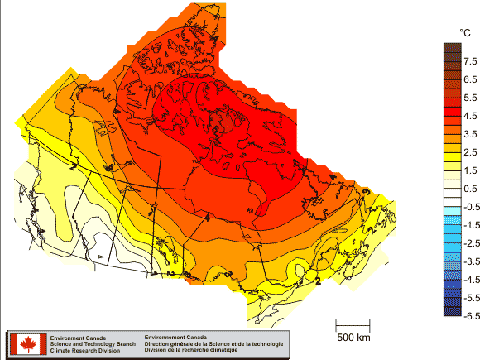
The impacts of climate change vary across the world. In Canada, northern regions have experienced greater warming than southern regions. This image shows the difference between winter temperatures in 2009-10 from 1948-2009 normals. To learn more visit Environment Canada site at their website
Positive Feedback
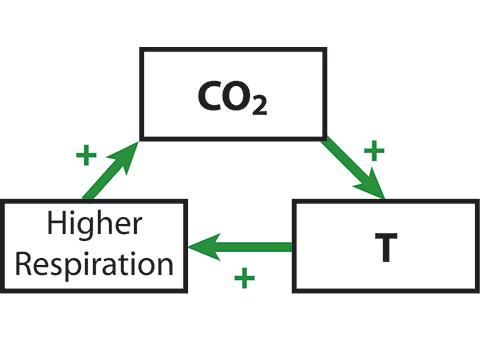
Ecosystems may respond to changes in climate in different ways. In one scenario, known as the temperature-respiration feedback, when temperature rises, respiration increases, adding CO2 to the atmosphere. Additions of CO2 enhance warming, creating a positive feedback loop.
Image by Lesley Dampier, UBC
Negative Feedback
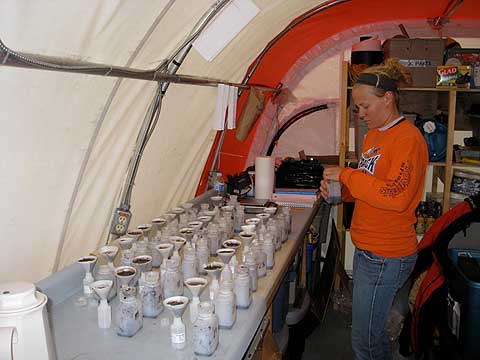
In a second possible scenario, known as the CO2-growth feedback, plants may increase photosynthesis as exposed to higher CO2 environments and reduce evapotranspiration. This leads to faster plant growth which takes up more CO2 and decreases the overall effect. This is an example of a negative feedback.
Image by Lesley Dampier, UBC
Historical Temperature Changes

Changes to global climate have occurred throughout geologic history. These changes have led to environments that are dramatically different from today, including ice ages and extreme warm periods. Explore historical changes in climate history at NOAA
Wikimedia Commons; image created by Robert A. Rohde / Global Warming Art
Earth-Atmosphere Radiation Balance
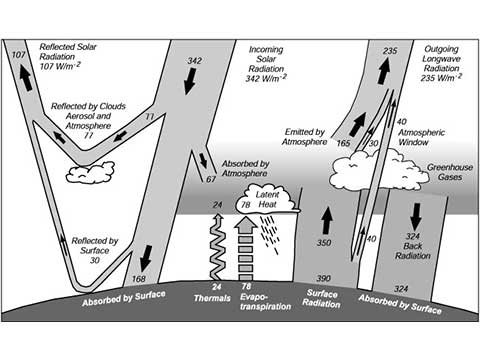
Greenhouse gases, like the glass of a greenhouse, act to trap some of the sun’s heat in the upper atmosphere. This image shows how radiation is transferred between the earth and its atmosphere.
Figure 1.3 from Houghton et al.(Eds.) 1996. Climate Change 1995.
Research Locations
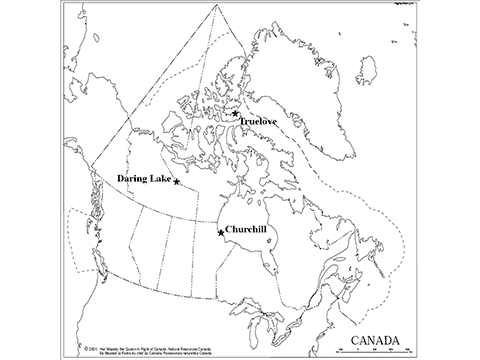
Researchers sampled soil across an ecosystem gradient in the Canadian Arctic. Sites ranged from the Sub-arctic (Churchill, MB) through the Low Arctic (Daring Lake, NT) to the High Arctic archipelago (Truelove, NU).
Image Maxime Paré, University of Saskatchewan.
Measuring GHG in the field
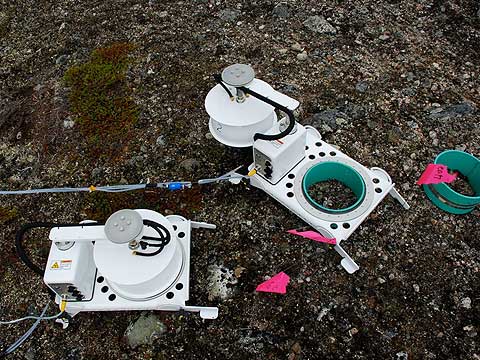
Greenhouse gases were measured in the field using automatic chambers. The chambers would close for five minutes, and a gas analyzer attached to the unit took about 3 samples per minute.
Photo by Maxime Paré, University of Saskatchewan
Measuring GHG in the field
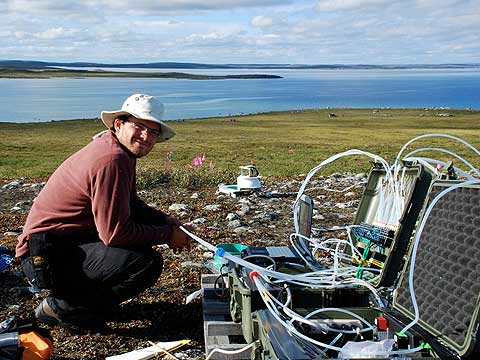
The measurements collected by the gas analyser are then used to determine the flux rate. This is the concentration of gas measured coming out of a unit area of soil over a specified period of time.
Photo by Angela Bedard-Haughn, University of Saskatchewan
Nitrogen Mineralization
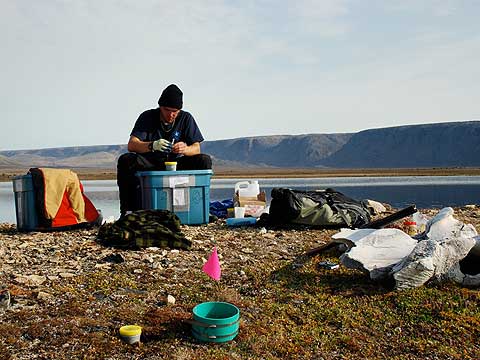
Mineralization is the production of plant-available ammonium (NH4+) from organic nitrogen. This was measured by adding a specific isotope (in this case, NH4+ enriched with 15N) to a soil core collected from the field. The changing ratio of enriched to unenriched nitrogen was used to calculate the amount of naturally-occurring mineralization
Photo by Angela Bedard-Haughn, University of Saskatchewan
Nitrogen Mineralization

Chemical extractions were done in temporary laboratory set up at the research sites. The extracts were frozen until they could be analyzed back in Saskatoon
Photo by Maxime Paré, University of Saskatchewan